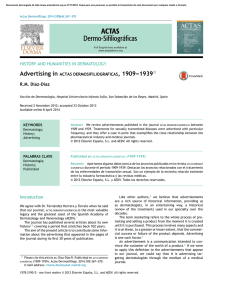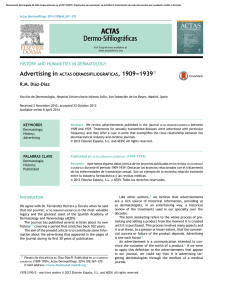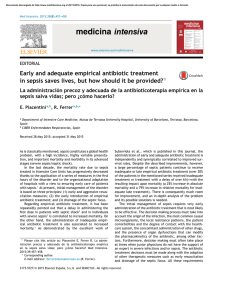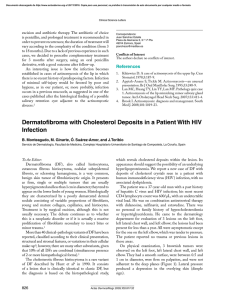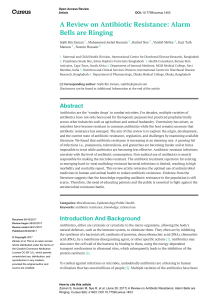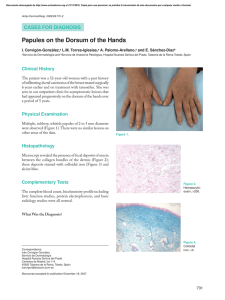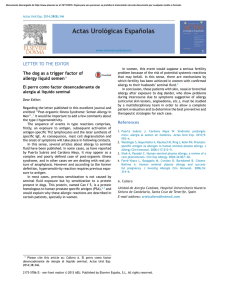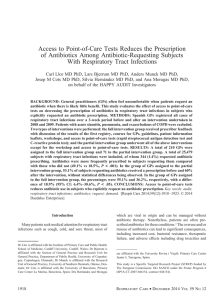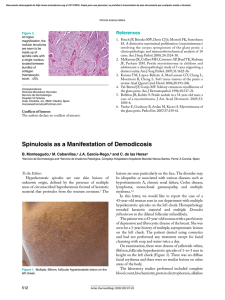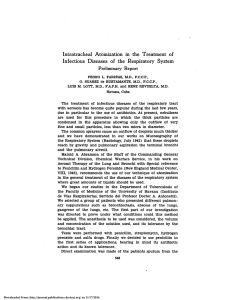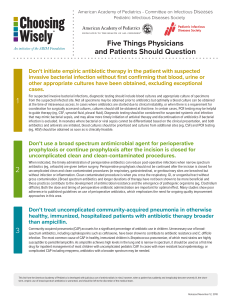Descargar PDF
Anuncio
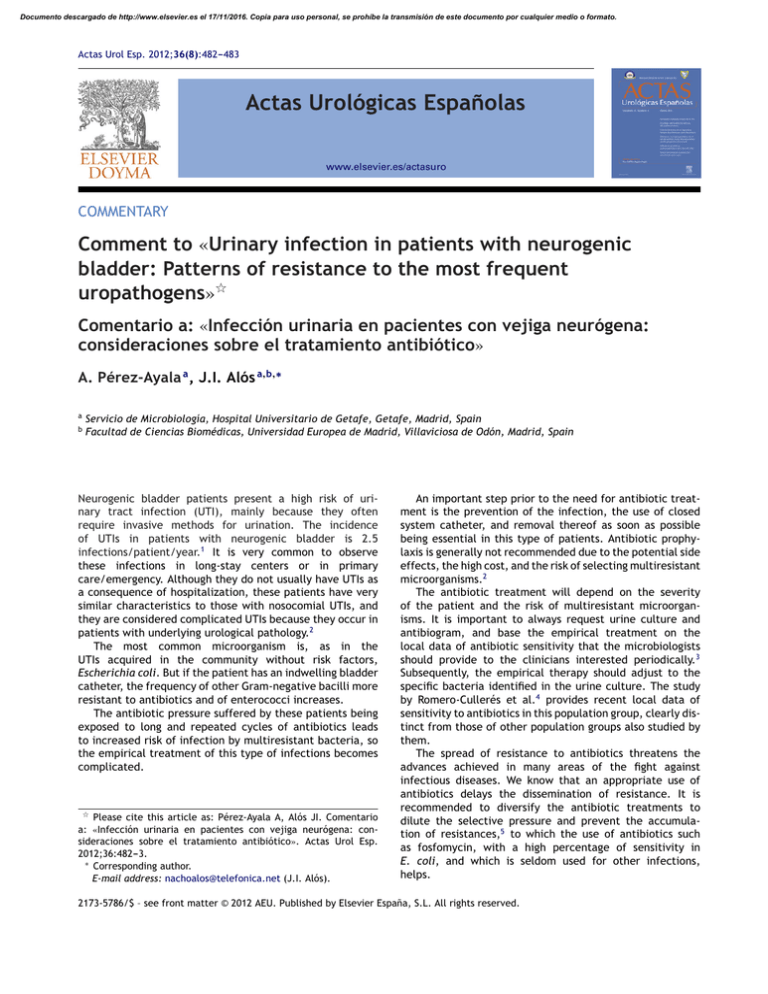
Documento descargado de http://www.elsevier.es el 17/11/2016. Copia para uso personal, se prohíbe la transmisión de este documento por cualquier medio o formato. Actas Urol Esp. 2012;36(8):482---483 Actas Urológicas Españolas www.elsevier.es/actasuro COMMENTARY Comment to «Urinary infection in patients with neurogenic bladder: Patterns of resistance to the most frequent uropathogens»夽 Comentario a: «Infección urinaria en pacientes con vejiga neurógena: consideraciones sobre el tratamiento antibiótico» A. Pérez-Ayala a , J.I. Alós a,b,∗ a b Servicio de Microbiología, Hospital Universitario de Getafe, Getafe, Madrid, Spain Facultad de Ciencias Biomédicas, Universidad Europea de Madrid, Villaviciosa de Odón, Madrid, Spain Neurogenic bladder patients present a high risk of urinary tract infection (UTI), mainly because they often require invasive methods for urination. The incidence of UTIs in patients with neurogenic bladder is 2.5 infections/patient/year.1 It is very common to observe these infections in long-stay centers or in primary care/emergency. Although they do not usually have UTIs as a consequence of hospitalization, these patients have very similar characteristics to those with nosocomial UTIs, and they are considered complicated UTIs because they occur in patients with underlying urological pathology.2 The most common microorganism is, as in the UTIs acquired in the community without risk factors, Escherichia coli. But if the patient has an indwelling bladder catheter, the frequency of other Gram-negative bacilli more resistant to antibiotics and of enterococci increases. The antibiotic pressure suffered by these patients being exposed to long and repeated cycles of antibiotics leads to increased risk of infection by multiresistant bacteria, so the empirical treatment of this type of infections becomes complicated. 夽 Please cite this article as: Pérez-Ayala A, Alós JI. Comentario a: «Infección urinaria en pacientes con vejiga neurógena: consideraciones sobre el tratamiento antibiótico». Actas Urol Esp. 2012;36:482---3. ∗ Corresponding author. E-mail address: nachoalos@telefonica.net (J.I. Alós). An important step prior to the need for antibiotic treatment is the prevention of the infection, the use of closed system catheter, and removal thereof as soon as possible being essential in this type of patients. Antibiotic prophylaxis is generally not recommended due to the potential side effects, the high cost, and the risk of selecting multiresistant microorganisms.2 The antibiotic treatment will depend on the severity of the patient and the risk of multiresistant microorganisms. It is important to always request urine culture and antibiogram, and base the empirical treatment on the local data of antibiotic sensitivity that the microbiologists should provide to the clinicians interested periodically.3 Subsequently, the empirical therapy should adjust to the specific bacteria identified in the urine culture. The study by Romero-Cullerés et al.4 provides recent local data of sensitivity to antibiotics in this population group, clearly distinct from those of other population groups also studied by them. The spread of resistance to antibiotics threatens the advances achieved in many areas of the fight against infectious diseases. We know that an appropriate use of antibiotics delays the dissemination of resistance. It is recommended to diversify the antibiotic treatments to dilute the selective pressure and prevent the accumulation of resistances,5 to which the use of antibiotics such as fosfomycin, with a high percentage of sensitivity in E. coli, and which is seldom used for other infections, helps. 2173-5786/$ – see front matter © 2012 AEU. Published by Elsevier España, S.L. All rights reserved. Documento descargado de http://www.elsevier.es el 17/11/2016. Copia para uso personal, se prohíbe la transmisión de este documento por cualquier medio o formato. Comment to «Urinary infection in patients with neurogenic bladder References 1. Siroky MB. Pathogenesis of bacteriuria and infection in the spinal cord injured patient. Am J Med. 2002;113 Suppl. 1A:67S. 2. García-Leoni ME, Esclarín de Ruz A. Management of urinary tract infection in patients with spinal cord injuries. Clin Microbiol Infect. 2003;9:780---5. 483 3. Livermore DM, Pearson A. Antibiotic resistance: location, location, location. Clin Microbiol Infect. 2007;13 Suppl. 2:7---16. 4. Romero-Cullerés G, Planells-Romeo I, Martinez de Salazar-Muñoz P, Conejero-Sugrañes J. Infección urinaria en vejiga neurógena: patrones de resistencias de los uropatógenos más frecuentes. Actas Urol Esp. 2012;36:474---81. 5. Lipsitch M, Levin BR. The population dynamics of antimicrobial chemotherapy. Antimicrob Agents Chemother. 1997;41:363---73.
